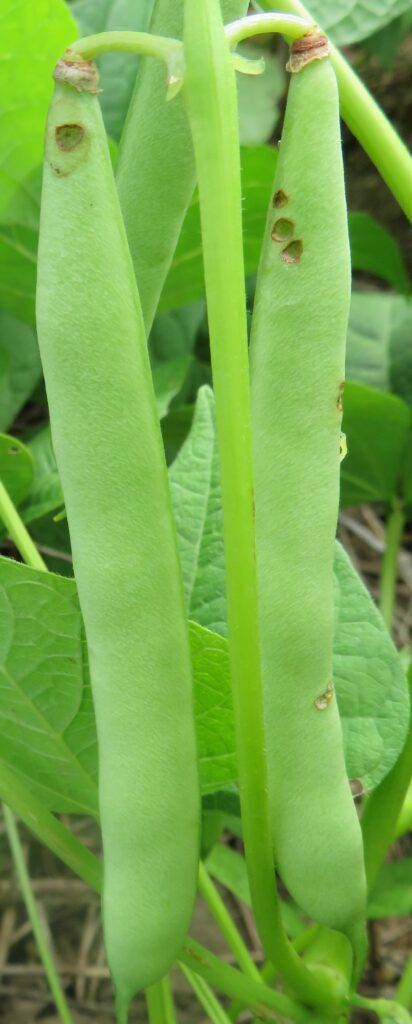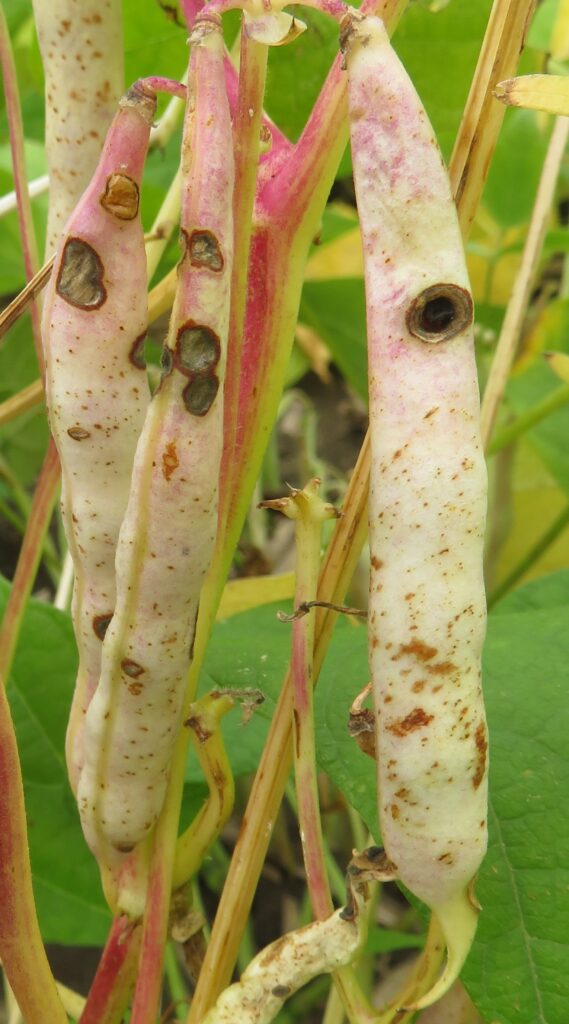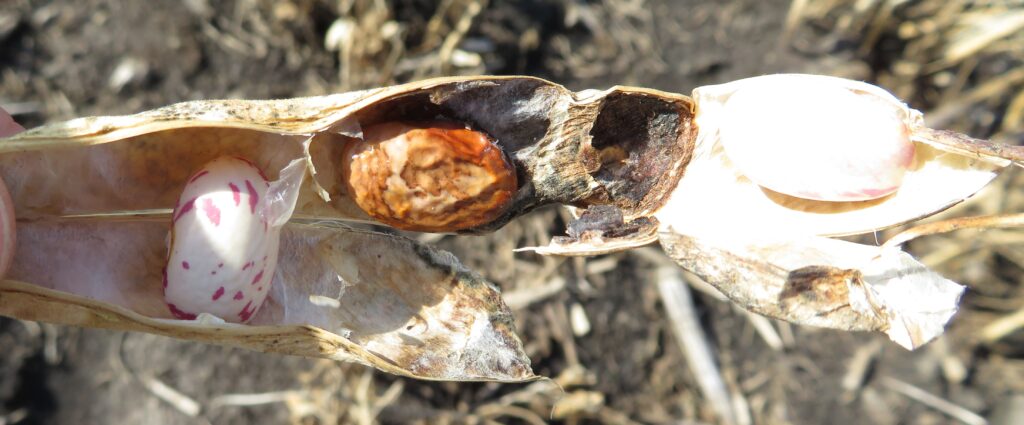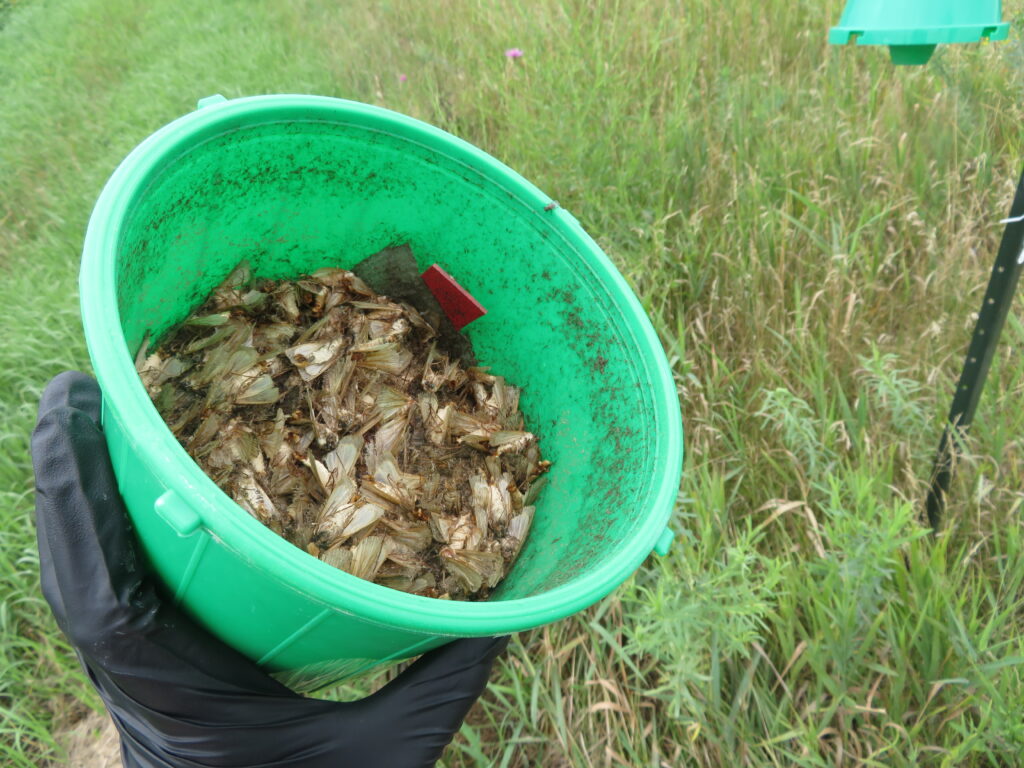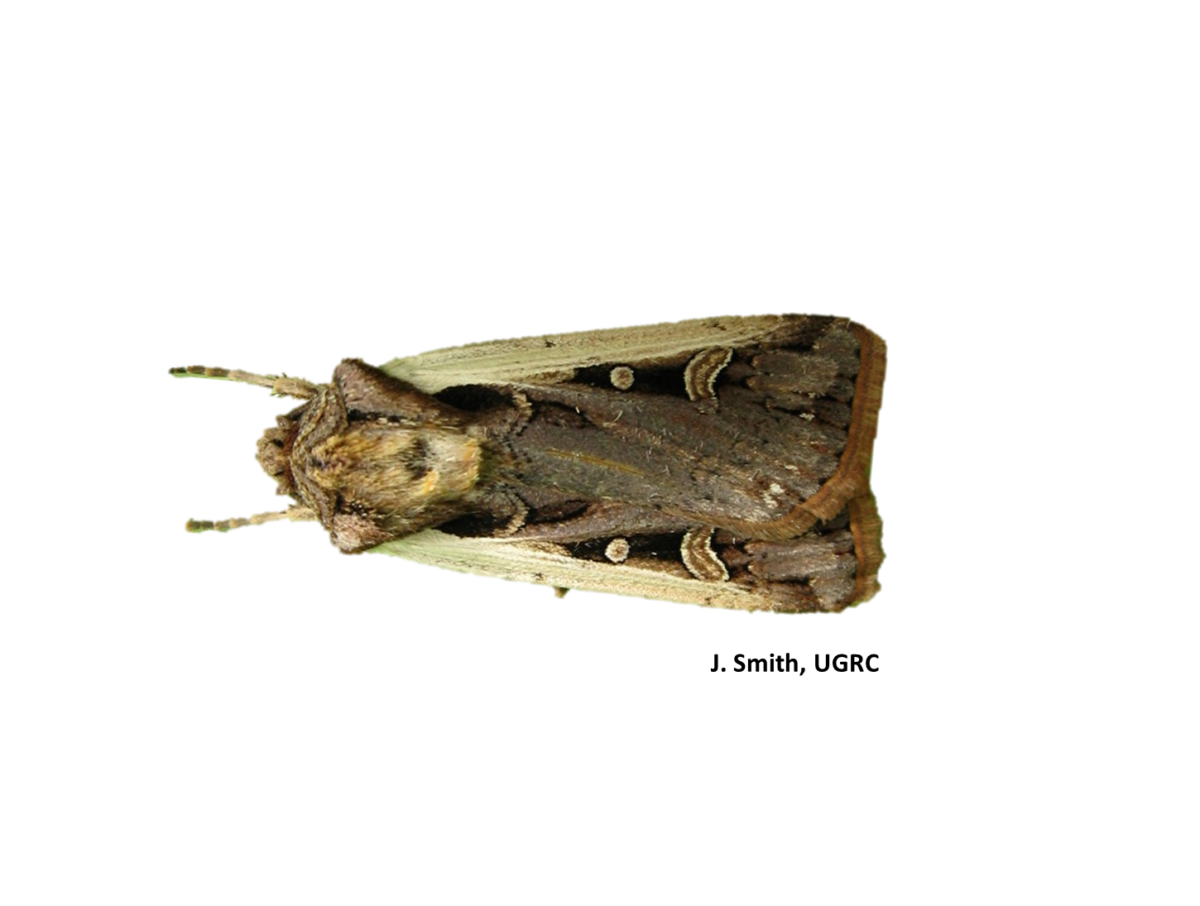Western Bean Cutworm (Striacosta albicosta)
Description
Western bean cutworm (WBC) larvae are tan to pink in colour. When they first emerge from their eggs, they resemble European corn borer with dark heads and beige bodies. Third instar larvae begin to appear like true armyworm, with distinct stripes along their bodies, but lack bands on their prolegs. Unlike armyworm, WBC has a larger spacing between their true front legs and prolegs, which cause the third and fourth instars to creep along like inchworms. Once they reach the fifth and sixth instars, there are no longer any distinct features on the body. They lack any stripes except for two broad dark brown bands on their pronotum. Adult moths are easy to identify from other corn pests. Each wing of the moth has a white band running along the edge or margin of the wing and has a spot or “moon” and comma-like mark approximately two-thirds of the way down the wing.
Dingy cutworm moths may be confused for western bean cutworm moths. Dingy cutworm adults lack the “full moon” marking on their wings.
Eggs are laid in masses of 5–200 eggs. WBC eggs are the size of a pinhead, pearly white when first laid, and are shaped like tiny cantaloupe. As the eggs mature, they turn tan and then purple in colour. Eggs hatch in about 5–7 days. Look closely to differentiate WBC eggs from stink bug eggs, which are similar in size and colour but are barrel shaped and often have a crown of tiny spines around the top of the barrel.
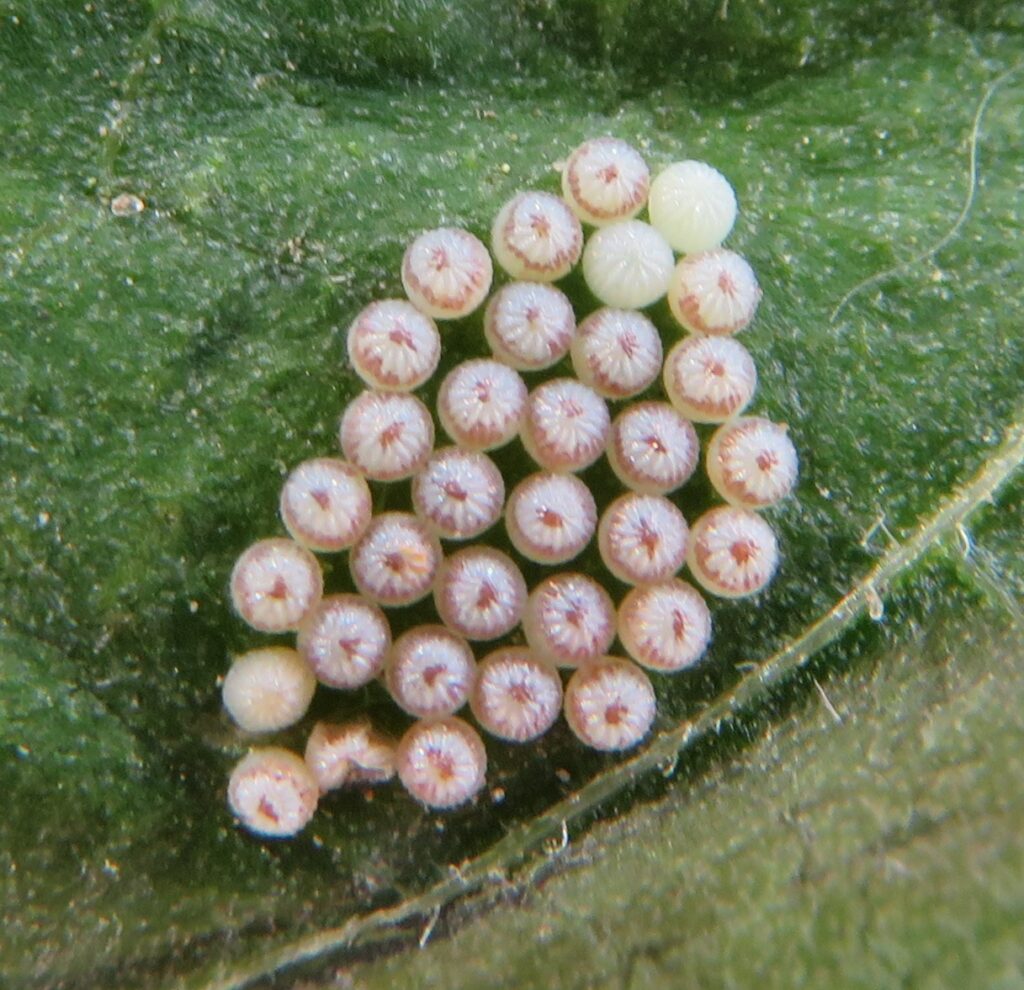
Life Cycle
There is one generation per year. Western bean cutworm is native to North America, although until its recent range expansion northeast from the U.S. Corn Belt into the Great Lakes Region, it had resided mainly in the western Great Plains states. WBC overwinter in southwestern counties of Ontario as pre-pupae in soil chambers. Adult moths emerge and are actively flying by early June through early September with peak fight typically occurring the last weeks of July and first week of August, depending on location and weather conditions. Adults may also be blown in from neighbouring U.S. states. Adults are mostly nocturnal though can occasionally be found in the corn leaf axils during the day. They lay eggs on the upper leaf surface of the upper leaves of the corn plants that are still standing upright and prefer fields in the whorl-to pre-tassel stages of corn. Once the corn crop is in tassel or beyond, they prefer to lay their eggs on the dry edible bean crop or later planted corn fields still in pre-tassel stages. In dry beans, eggs are laid on upper and lower leaf surfaces and are very difficult to find when scouting. Eggs hatch within a week. Larvae are very mobile.
Damage
Damage begins as leaf feeding, but once the larvae get bigger, they will move to feed on and into the pods and seeds. WBC are unique in that they enter the pods at night, exiting them before dawn. They will chew and enter a new pod each night they are feeding. Damage to seed causes “pick” and may result in a down-grading of the beans and potential additional charges at the elevators for sorting out the damaged seeds. Entry holes in the pods also allow for the development of pod diseases or discolouration of beans, compromising quality.
Conditions that Increase Risk
Dry edible bean fields planted on sandy soils and in areas of known hot spots (Thamesville to Strathroy and Tillsonburg/Simcoe) are at greater risk. Fields bordering corn, that have reached threshold are at risk, especially once corn is beyond the pre-tassel stages.
Scouting Technique
WBC rarely feed on the leaves but instead puncture the bean pod and enter it to feed on the developing seeds inside. Each night the larvae enter and exit a new pod. Larvae hide in the soil and are rarely present on the plants or within the pod during the day. If larvae are found in the pod, it is more likely to be European corn borer. Due to the difficulty in finding the presence of WBC within dry edible bean fields, the focus on scouting is first based on monitoring adults through pheromone traps to indicate if and when scouting is necessary. Contact the provincial entomologist for pheromone trap configurations, supply sources and monitoring protocols, or check the OMAFRA WBC Infosheet.
Monitoring with traps consists of placing two WBC pheromone traps per bean field on opposite sides of the field, along the field’s edge close to low lying vegetation like grassy weeds. Place traps no later than the last week of June and monitor them through the growing season. Check traps regularly (at least weekly) to ensure all moths are counted. It is best to use the traps as guides, focusing scouting efforts in the field approximately 10–20 days after peak moth flight when pod feeding is likely to occur. Scouting for egg masses in adjacent cornfields, which are easier to find than in dry edible beans, can also help determine local WBC populations.
Threshold
Due to the difficulty in finding eggs and larvae when scouting for WBC in dry edible beans, no thresholds have been established at this time. If WBC has reached a threshold in the neighbouring corn field, then adjacent dry edible bean fields are likely at risk, especially if the corn fields have passed the pre-tassel stage. If entry holes are observed in the pods prior to R6 stage (seed development), an insecticide application is necessary.
Management Strategies
Insecticides should be applied if all of the following criteria are met:
- There are pods present
- At least 150 moths have been caught (i.e. it is not a fringe area for WBC)
- Weekly moth captures in the trap are starting to decline; peak moth flight has passed
- Pod feeding damage can be found

